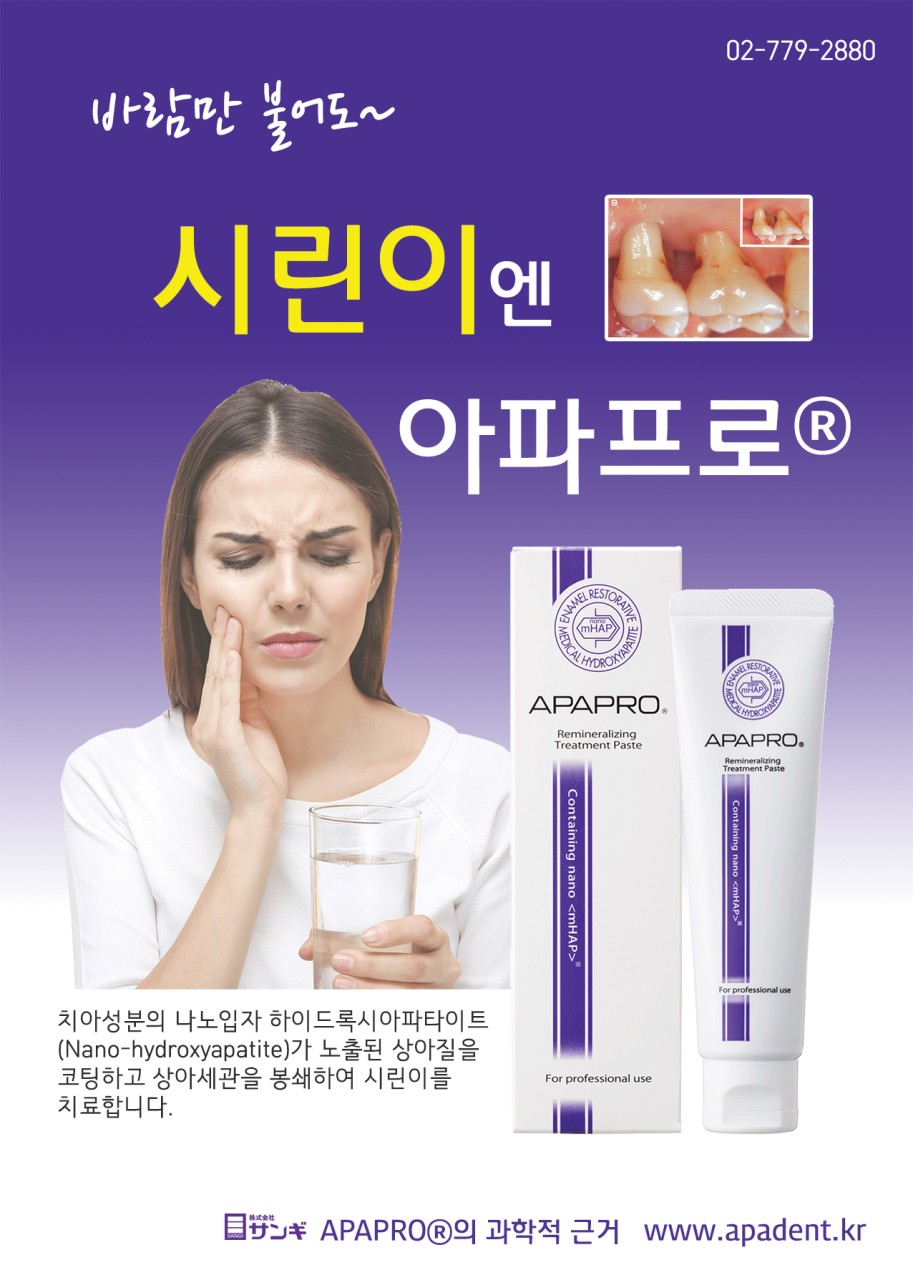| subject | 시린이엔 아파프로! |
|---|---|
| writer | 관리자 |
| date | 20-01-07 14:40 |
| hit | 1,277 |
관련링크본문J Dent. 2019 Mar;82:11-21. doi: 10.1016/j.jdent.2018.12.014. Epub 2019 Jan 3. Clinical efficacy of nano-hydroxyapatite in dentin hypersensitivity: A systematic review and meta-analysis.de Melo Alencar C1, de Paula BLF1, Guanipa Ortiz MI1, Baraúna Magno M2, Martins Silva C3, Cople Maia L2. Author information
AbstractOBJECTIVES:To evaluate the desensitizing effect of nano-hydroxyapatite (n-HAP) on dentine hypersensitivity (DH). SOURCES:Seven electronic databases were searched on April 27, 2018. STUDY SELECTION:Randomized clinical trials (RCTs) were included based on the PICO strategy: Participants - Humans with DH; Intervention - n-HAP-containing desensitizing; Comparison -n-HAP-free treatments or placebo/negative control; and Outcomes - relief of DH. The risk of bias was classified by the Cochrane guidelines. Five meta-analyses were performed to evaluate the efficacy of n-HAP with regard to pain assessment stimuli (primary outcome); comparison of n-HAP with other treatments or placebo/negative control, and effectiveness of at-home and in-office n-HAP use (secondary outcomes). The quality of the evidence was evaluated using the GRADE. DATA:Six RCTs with 4 weeks of follow-up were included in the meta-analysis. For the primary outcome, n-HAP showed a better desensitizing effect for evaporative stimuli (SMD -1.09 [-1.24, -0.94], p < 0.00001) and tactile stimuli (SMD -0.93 [-1.42, -0.43]) than other treatments (p = 0.0002). However, there was no difference between n-HAP and other treatments for the cold stimuli (SMD -0.17 [-0.81, 0.48], p = 0.61). In an overall analysis, n-HAP-containing treatment showing the most significant desensitizing effect (SMD -0.93 [-1.19, -0.68], p < 0.00001) with a high quality of evidence for pooled results. In the secondary outcomes, n-HAP showed the best effect in the overall analysis (p < 0.05) with moderate quality evidence. CONCLUSIONS:The n-HAP-containing treatment showed better clinical performance than other treatments for DH relief. However, long-term follow-up RCTs are required in the future before definitive recommendations can be made. CLINICAL SIGNIFICANCE:Dentin hypersensitivity is a common global condition and its multifactorial etiology has led to the development of several treatments. The n-HAP-containing treatment showed greater DH relief when compared to other desensitizing agents, placebo or negative control. Copyright © 2019 Elsevier Ltd. All rights reserved. KEYWORDS:Clinical trials; Dentin hypersensitivity; Desensitizing agents; Meta-analysis
Stomatologiia (Mosk). 2018;97(4):23-27. doi: 10.17116/stomat20189704123. [Efficiency of paste and suspension with nano-hydroxyapatite on the sensitivity of teeth with gingival recession]. [Article in Russian; Abstract available in Russian from the publisher] Author information
AbstractThe purpose of our study was to assess the efficiency of toothpaste 'Intensive strengthening of supersensitive teeth with nano-GAP' INNOVA and the suspension 'Liquid Enamel' INNOVA on the sensitivity of teeth with gingival recession. We examined 40 people aged 20-25 years. Each group consisted of 20 people: 10 women, 10 men. The first group (observations) used the paste and the suspension for 14 days, and the second group (comparisons) cleaned teeth only with a brush without a paste. Schiff aerial test was performed to assess the rate of hypersensitivity. As a result of the study, it was found that the combination of paste and liquid suspension with nano-hydroxyapatite for 14 days effectively reduced the hypersensitivity of the teeth with gingival recession that was shown by a statistically significant decrease in the Schiff index in the observation group. Thus, this combination is the method of choice in the treatment of hyperesthesia and can be used as an alternative substitute therapy.
|
|
댓글목록
등록된 댓글이 없습니다.
